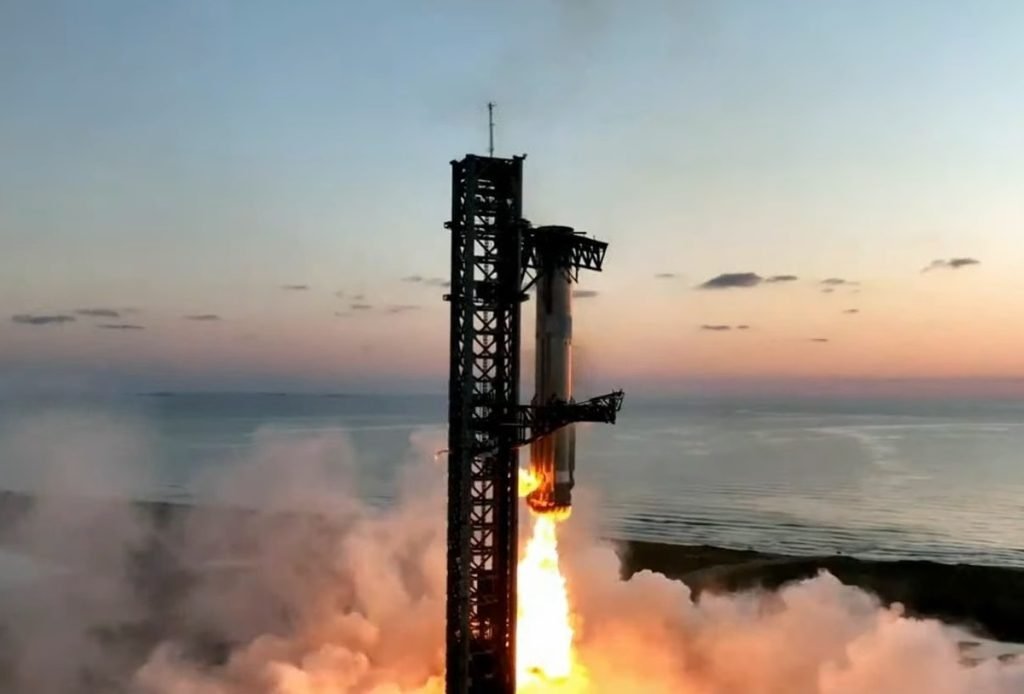In an intriguing development within the Chinese space sector, Cosmoleap, a nascent rocket startup, has made waves following an influx of more than 100 million yuan, equivalent to approximately $14 million.
The investment is earmarked for advancing its Yueqian reusable rocket and a recovery system that seemingly draws inspiration from SpaceX.

Cosmoleap’s ambition was publicly revealed through a press statement on November 1, chronicling its meteoric rise since its inception in March 2024.
The startup, formally known as Beijing Dahang Transition Technology Co., Ltd., is set on carving its niche by entering the lucrative realm of satellite deployment.
This comes amid China’s burgeoning efforts to develop a satellite internet megaconstellation.
Notably, the Yueqian rocket bears a striking resemblance to SpaceX’s widely acclaimed Starship, particularly with its ‘chopstick’ arm technology for mid-air booster recovery.
The system, akin to SpaceX’s Super Heavy catch maneuver, was first demonstrated with Starship on October 13, igniting discussions over Cosmoleap’s approach.
The investment round witnessed participation from key players like Shenergy Chengyi, Tiangchuang Capital, Legend Capital, and other venture capitalists.
This financial backing underscores Cosmoleap’s potential in leveraging China’s robust commercial space ecosystem.
The firm benefits from latecomer advantages in a market already populated by companies such as Space Pioneer, iSpace, and Galactic Energy, each bringing unique innovations to the table.
Cosmoleap’s Yueqian rocket, measuring 75 meters in height, contrasts with SpaceX’s taller Starship but carries the ambition of significant payload delivery capacity.
When expendable, it can transport up to 10,460 kg or scale down to 6,280 kg with reused components. The company aspires to launch its first Yueqian flight by 2025 or 2026.
However, the company’s aspirations extend beyond mimicking existing technology. Plans are underway for an even more formidable rocket, surpassing Starship’s dimensions.
At a towering 126 meters, it’s designed to carry a hefty 100 tons to low Earth orbit.
This behemoth is slated for a potentially groundbreaking launch around 2030, promising to capture global attention if successful.
The path to launch, while laden with challenges, exhibits promise underpinned by China’s strategic focus on commercial space as a burgeoning sector.
Despite the hurdles faced by new entrants, Cosmoleap’s trajectory in the competitive landscape is aided by the experience and infrastructure established over recent years.
While some social media critics have mused over the apparent likeness of Cosmoleap’s technology to SpaceX’s, the startup remains unperturbed, aligning itself with China’s advanced space goals.
As it charts a course toward orbit, backed by robust funding and strategic insight from its investors, Cosmoleap’s journey is one to watch closely.
